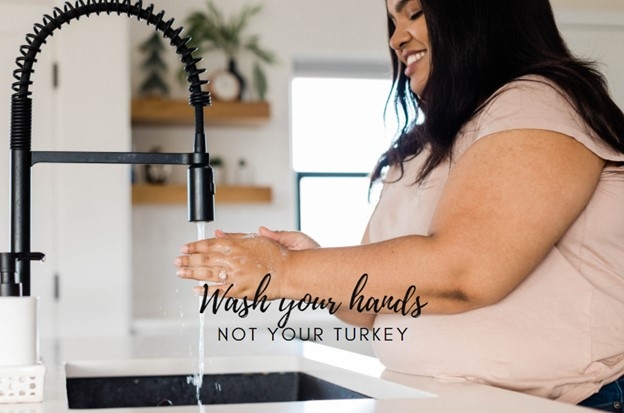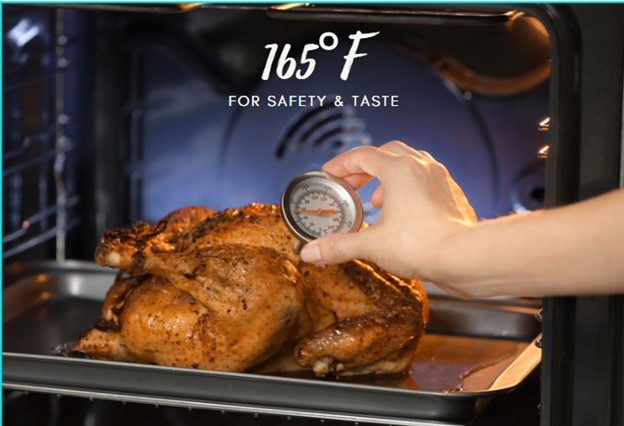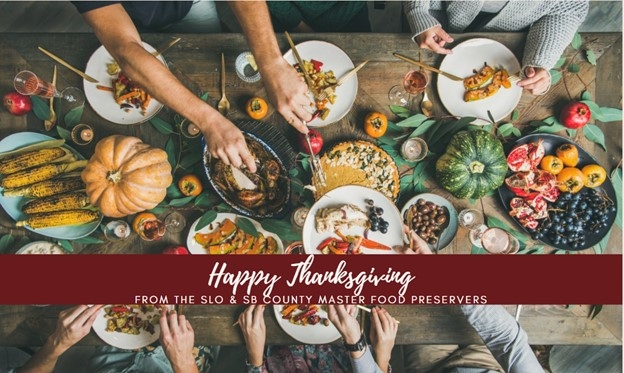This Thanksgiving could be our biggest family and friend get together in a long time, with some projecting a 13% increase in holiday travel compared to 2020. To protect yourself and your family from COVID-19, see CDC's Safer Ways to Celebrate Holidays.
To protect yourself and your family from foodborne illness, avoid some common mistakes. According to the USDA, "Unsafe handling and under-cooking of food can lead to serious foodborne illness.” Avoid making loved ones sick by following these USDA Food Safety and Information Services tips.
Tip #1: Don't Wash Your Turkey.
This may go against old family recipes or cooking traditions, however washing raw meat and poultry can cause bacteria to spread up to three feet. How do you remove bacteria if you don't wash it? Cooking poultry to a safe temperature kills any dangerous bacteria that may be present. Washing poultry is not necessary and may spread bacteria to other surfaces where you are preparing raw foods like vegetables and salads.
Tip #2: Plan Ahead to Thaw Your Bird Safely.
Use the refrigerator, the cold-water method, or the microwave to safely defrost a frozen turkey. Thawing in the refrigerator is preferred because the turkey will defrost at a consistent, safe temperature. Allow 24 hours for every 5 lbs. of turkey to thaw in the refrigerator (a 15 lb. turkey needs 3 days). To thaw in cold water, submerge the bird in its original wrapper, changing the water every 30 minutes. Cold water and microwave thawing can be used if your bird did not entirely defrost in the refrigerator. Follow your manufacturer's guide for thawing poultry in the microwave. Poultry defrosted in cold water or the microwave must be cooked immediately. Have more questions? See this guide to safely preparing a turkey.
Tip #3: Too dry? Undercooked? Just right? Use a thermometer.
To determine if a turkey is cooked to a safe temperature, check its internal temperature with an instant read food thermometer. Check a whole bird in three locations: the thickest parts of the thigh, the wing, and the breast. Your thermometer should register 165°F in all three places. Using a food thermometer is the best way to ensure your turkey is cooked to a safe temperature, but not overdone. Don't have an instant read thermometer? Find one at your local cooking supply store starting at about $15. They are reusable and can keep your family safe for years to come.
Tip #4: Don't let the leftovers linger.
We all like to linger at the table after eating, however, don't let the leftovers stay out at room temperature for more than 2 hours. After serving, cut the leftover turkey into small pieces and refrigerate. Keep hot food items like gravy or stuffing hot or pack them up and put in the refrigerator. Leftovers will keep for four days in the refrigerator set below 41°F. For longer storage, pack them into freezer safe bags or containers and freeze for up to 4 months. Always wondering how long you can keep food in the refrigerator? Consider using the FoodKeeper App from USDA.
Enjoy the holidays and Happy Thanksgiving!
Looking for SLO and SB Master Food Preserver classes? We are still here!!!
This summer our Master Food Preserver Coordinator retired after many years of serving the County of San Luis Obispo. In addition, academic oversight of the program transitioned. It has been a time of change for the MFP program but we are still here.
We are starting to plan some in-person workshops for 2022 and are hoping to host a new volunteer training starting in February. More information to come, but in the meantime you can visit our website at: http://cesanluisobispo.ucanr.edu/, our blog at https://ucanr.edu/blogs/foodpreservation, email us at slomfp@ucanr.edu, or call our helpline at: 805-781-1429. We also check pressure canner gauges at no cost. Contact us for more information!
Editor - Area Director for UCCE in San Luis Obispo, Santa Barbara, and Ventura Counties


